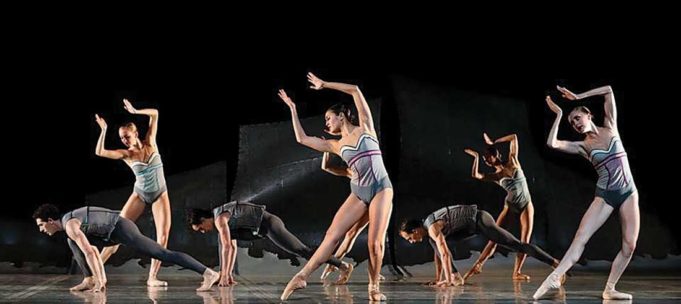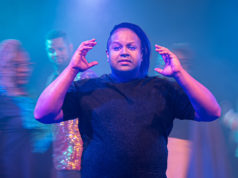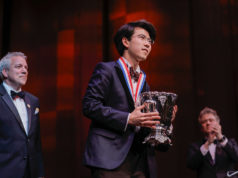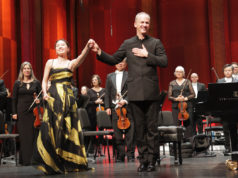Taking on two hefty contemporary works for its season-opening program in Bass Performance Hall last weekend – Carlos Acosta’s Carmen and Christopher Wheeldon’s DGV: Danse à Grande Vitesse – Texas Ballet Theater looked as comfortable as if performing one of its regular classical series. The dancing was stylish and full of life.
This Carmen, based on the Bizet opera of the same name, has an unusual pedigree. Acosta is one of the greatest male classical dancers of his generation, but he never choreographed a thing before. He was principal guest artist with London’s Royal Ballet for 17 years and had time off to dance with other companies. (He appeared with TBT as Albrecht in a memorable performance of Giselle some years back, as well as dancing the pas de deux from Le Corsaire.) He received a CBE medal in 2014 for his service to dance in England.
But for his farewell performance at the Royal Ballet last November at the age of 42, instead of performing one his classical roles, he choreographed a one-act version of Carmen, dancing the title character’s lover, Don Jose. Acosta kept the main story. From Carmen’s fight in jail to her seduction of Don Jose, her escape to a bandit hideout with him, the arrival of bullfighter Escamillo and Carmen’s tryst with him, and finally her fatal reunion with Don Jose. Most of Bizet’s familiar melodies were there, too, adapted for orchestra by Martin Yates.
The amazing thing was that it all held together, flowing seamlessly as is if created by a veteran choreographer. Leticia Oliveira was the opening-night Carmen and seemed made for the role. Her tender looks and fiery passion were ideal for the character’s mercurial moods. The love duets with Don Jose (Carl Coomer) and Escamillo (Jiyan Dai) were subdued yet intense. In the final scene Coomer was extraordinary as Carmen tried gently to brush him off and then became more insistent. Having given up his career, his home – basically, everything – for her, he couldn’t stand to watch her merely walk away. The anguish and hurt he felt were all in his face as he broke down and stabbed her, falling to his knees in confusion and horror over what he had done as the curtain came down. A standing tribute greeted the cast as the curtain rose again.
Miguel Harth-Bedoya, regular conductor of the Fort Worth Symphony Orchestra, led the “Symphony Musicians of Fort Worth” in a sympathetic accompaniment to the unfolding drama. With the Fort Worth Symphony Orchestra on strike, musicians were hired individually, and Harth-Bedoya had the blessing of FWSO management to perform. Acosta has said he doesn’t see any more choreographing in his future, but he will continue dancing non-classical roles. His main interest, he said, is a company he started in his native Cuba called Acosta Danza with 25 young dancers, half of them classically trained, the other with dance experience. The Cuban Ministry of Culture provided him with a building, a onetime appliance store in Havana, to begin classes. Eventually, the group will move to a former dance school now being restored. In the meantime, his Carmen is now a coproduction of TBT along with the Royal Ballet and the Queensland Ballet of Australia.
In a dramatic change of pace, Michael Nyman’s exuberant, minimalist music for DGV: Danse à Grande Vitesse filled the auditorium in the second half of Friday’s performance. The ballet brought a contemporary edge to the evening. Wheeldon came across the music in 2006, more than a decade after he was commissioned by the Royal Ballet to create the piece for the opening of a high-speed rail line in France. Program notes say the piece encompasses the thrill of train travel and modern technology, but that didn’t come across for me. What I saw was a superbly prepared corps of six couples and four solo couples, dancing inventive and appealing choreography; the corps in various synchronized moves, the solo couples (Robin Bangert and Shane Howell, Allisyn Hsieh-Caro and Andre Silva, Alexandra Farber and Carl Coomer, and Samantha Pille and Paul Adams) in stunning variations. As Harth-Bedoya built the repetitive phrases, heavy on brass and percussion, to a joyous climax, everything suddenly stopped, and the house erupted in a screaming ovation. It really was an exciting performance.












